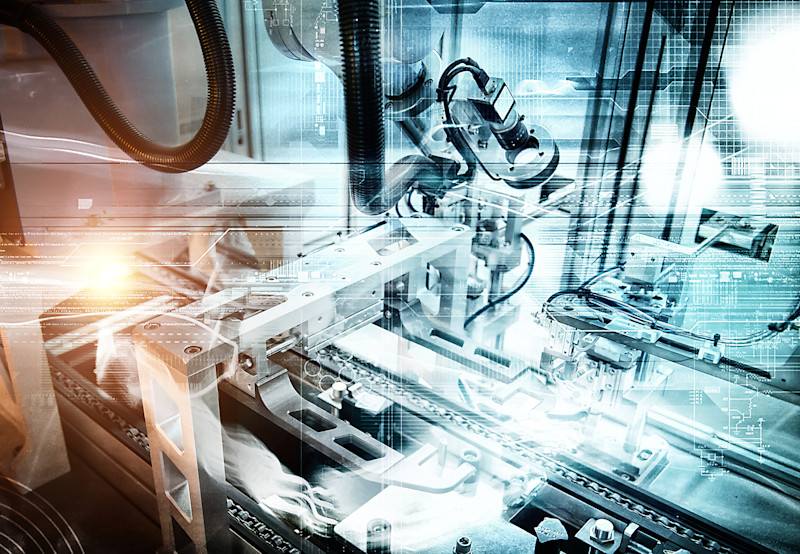Recent advancements in end of arm tooling (EOAT) have made robotic arms increasingly useful throughout manufacturing. Heating devices can mold and bend materials, pressure sensors provide feedback about how hard a robot is gripping an object, suction devices can fold sheet metal, collision detection sensors provide the robot an awareness of its surroundings, and safety sensors can alert the robot if it needs to move or stop operating if a person is within a certain range.
In this article, we’ll review three of the most important types of EOAT – grippers, vision technology, and sensors – and how they increase the functionality of robotic arms.
Grippers
The most common EOAT is the gripper, which can pick up and manipulate objects and is typically used for pick-and-place, assembly, and machine tending operations. There are four main types of grippers: vacuum, pneumatic, hydraulic, and servo-electric grippers.
The vacuum gripper uses the difference between atmospheric pressure and a vacuum to lift, hold, and move objects and is the standard EOAT used in manufacturing due to its high level of flexibility. Vacuum grippers are used to automate a wide range of tasks, and one of the most widespread applications is packaging and palletizing.
Pneumatic grippers are popular due to their compact size, light weight, low cost, and ability to operate in tight spaces. They can be either opened or closed and use compressed air and pistons to operate their jaws, also called fingers. Other advantages include their large grip force range and rapid response times.
The hydraulic gripper provides the most strength and is used for applications that require significant amounts of force. They generate their strength from pumps that can provide up to 2000 psi.
Electric grippers do not provide the same level of gripping power as hydraulic grippers, but they are suitable for applications that require high speed and light-to-moderate gripping force. The most significant feature of electric grippers for manufacturing automation is the level of control they enable.
Vision technology
Machine vision (MV) continues to grow in use as costs fall and processing capabilities increase. 2D vision sensors have been used for decades, and they are well suited to applications involving absence/presence detection, pattern alignment, barcode, and optical character recognition (OCR). The technology is also used for contour-based pattern matching to identify part location, scale, and orientation. Limits to 2D sensors include their inability to measure shape and their sensitivity to lighting conditions.
“While 2D imaging provides vast amounts of information and is the predominant technology in machine vision applications today, there are several different 3D technologies producing near real-time 3D representations of a scene that are starting to be embraced for various manufacturing applications,” said David Bruce, engineering manager, general industry & automotive segment, FANUC America Corp.
3D vision sensors use two cameras at different angles or a laser scanner to provide highly accurate three-dimensional object recognition. An object’s shape and position can be accurately determined, and the technology is not sensitive to minor lighting variation or ambient light. Integrated with machine learning and artificial intelligence technologies, 3D vision sensors enable robot vision-guidance, quality control inspection, and automated assembly, including picking and placing diverse objects.
End of arm sensors
A sensor converts physical stimuli such as heat, vibration, pressure, or proximity into electrical signals that are converted into digital data and then processed by the computer. A sensor is typically used to produce a variable signal over a measurement range as opposed to a switch, which generally acts in a binary fashion, i.e., on or off. There are dozens of types of sensors used in EOAT, and basic sensors are easy to install and not expensive.
Sensors that measure vibration, temperature, contact, proximity, pressure, tilt, positioning, motion, and flow are common in manufacturing EOAT. They provide data and information about the physical operating environment and feedback about the activity and movement of the robotic arm.
In our next article in this series, we’ll explore the differences between industrial automation, cobots, and adaptive robots.






